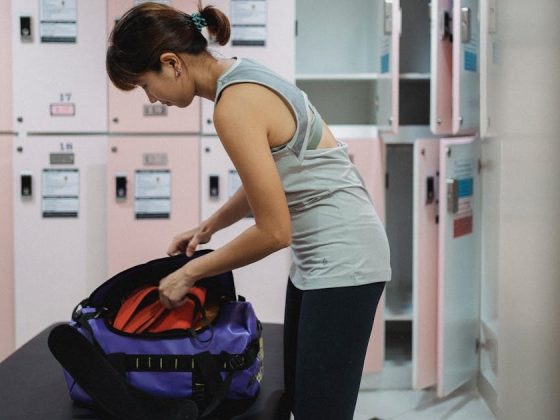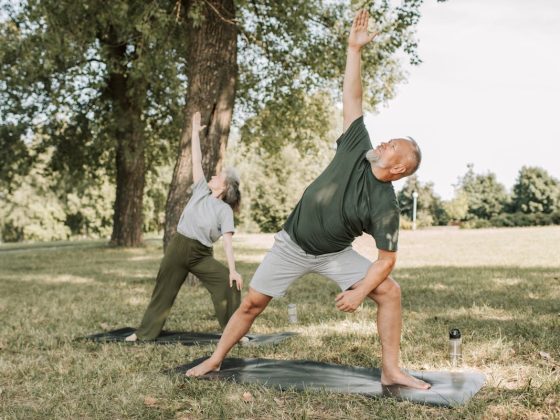In order to train successfully to enter the boxing ring, training must mimic similar movements and cardiovascular conditioning used while in a match. Strength training, anaerobic and aerobic training, and agility training are all important factors within a comprehensive training plan for boxing.
Avoid “Gassing Out”
Not everyone with big muscles is necessarily equipped to be a good boxer. While they may pack a mean punch, the importance of cardiovascular “staying power” cannot be understated. Four two-minute rounds may not seem like it would call for lots of cardiovascular conditioning, yet those rounds will quickly become brutal if the boxer is gasping for breath.
Aerobic Intervals
Boxing has stop-and-go aspects to it, necessitating interval training. So while a regimen of long runs may help improve overall cardiovascular health, it’s far better to train in bursts, such as a minute of steady running followed by a twenty second sprint, repeated over the length of the run. Or run for a minute and then drop down for push-ups for twenty seconds, followed by a resumed run. Practice explosive bursts of movement coupled with steady state cardio. As your fitness level improves, increase the length of the bursts of activity while maintaining the same recovery period.
Practice Boxing Moves
Shadow boxing is popular for good reason; boxer must repeatedly practice the same movements they’ll use in the ring. The goal is to usher along neuromuscular facilitation, commonly known as “muscle memory.” The more practiced in movements a boxer is, the more naturally the movements will flow during a match.
Boxing moves should be practiced using perfect form; practice sloppy, and the movements will come out sloppy during a match because that’s how the body and mind remember the movements.
Boxing moves that should be practiced frequently include:
- Jabs
- Crosses
- Uppercuts
- Hooks
- Bob and weave
- Fast footwork
Weighted gloves or leg weights can add intensity to training but should be used cautiously since they increase the risk of injury. Beyond shadow boxing, training should utilize heavy bags to help the boxer get accustomed to making contact. The important thing in using a heavy bag is to not stop immediately upon contact – instead, strive to hit “through” the intended target.
Sparring
Spar with training partners to not only help learn how opponents may move, but also for the cardiovascular benefit. Use proper equipment while sparring to ensure safety of both participants:
- Boxing gloves and wraps
- Headgear and mouth guard
- Body protector
- Cup for male boxers
Wear comfortable clothes that allow movement. While there are shoes specific to boxing, any athletic shoes that allow for movement will suffice.
Muscles Needed for Boxing
Boxers need to pack some power in their punches of they won’t be successful. Specifically training the muscles used in the ring will help make for more powerful punches. Aim for three sets of 10-12 when lifting weights, moving incredibly slowly to force stabilizer muscles to kick in.
Quads & Gastrocnemius
ExpertBoxing suggests that the legs hold the most important muscles for powerful boxing – in particular, the quadriceps and calf muscles. Though it may seem strange to train legs when the upper body will be responsible for throwing punches, realize that the most effective boxers put their entire bodies into their throws.
Weighted squats and calf raises are examples of exercises that will help strengthen leg muscles.
The Core
Punches come from the “core,” which refers to the abdominal and surrounding muscles. The stronger and more stable the core, the more powerful punches will be.
Planks are an excellent option for strengthening core muscles such as the obliques, serratus anterior and transversus abdominus. Planks are an effective overall isometric exercise that will certainly benefit boxers.
Shoulders and Chest
Shoulders need ample training to ensure they can withstand the rigors of boxing, as does the chest. If the shoulders fatigue easily, it will result in a far less powerful boxing performance.
Push-ups can’t be beat when it comes to training the muscles of the shoulders and chest including the pectoralis major, deltoids, triceps, and even the abdominal muscles. Like the plank, it’s a training move that is incredibly beneficial and works myriad muscles.
Overall Strength
Neglecting some muscles to only focus on a few may prove detrimental to boxers and may result in injury as the body tries to compensate for the imbalance.
Flexibility and Balance
Flexibility helps boxers move better and avoid injury and good balance helps keep them on their feet. Both are essential to train when trying to become a well-rounded boxer.
Yoga and tai chi both help with flexibility and balance. Boxers may enjoy power yoga as it incorporates challenging strength training into the practice.
Rest and Recovery
Seasoned athletes who love being in training sometimes neglect adequate rest and recovery because they don’t like spending a day without training. Rest is incredibly important for boxers as it allows their bodies to recover from the physical demands of training.
A rest day does not necessarily mean doing nothing; instead, light cardio should suffice to allow the body to recover and repair in preparation of upcoming training.
A Well-Rounded Boxer
Training and recovery should be coupled with adequate nutrition and hydration in order to allow the body to function at its best.
- Aim for two days a week of heavy strength training.
- Four days a week should be spent in aerobic interval training. Sparring or shadow boxing to hone technique can be done on some of these days too, at least twice a week.
- One day a week, on one of the cardio days, add a flexibility and balance session such as yoga or tai chi.
- One day a week is reserved for rest and recovery. If the yoga or tai chi is restorative, it can be accomplished on this day instead of on a cardio day.
Beginner Sample Schedule
Jumping right into a full-blown training routine for boxing may be too much for the average person and may result in injuries. Instead, start smaller and aim for consistency, adding on as progress improves.
- Monday: Interval training such as a jog/sprint combination (60 second jog/20 second sprint) for thirty minutes
- Tuesday: Strength training using the exercises suggested above, aiming for three sets with 10-12 reps each. It’s not necessary to go to failure, but it should be difficult when nearing the end of the sets.
- Wednesday: This is a rest/recovery day. Sixty minutes of restorative yoga or tai chi or a brisk walk/slow jog will help your body recover.
- Thursday: Repeat Tuesday’s strength training routine unless there is pain (not soreness) present. If there is pain, take another recovery day.
- Friday: Repeat Monday’s interval training day. If you’re ready for sparring or heavy bag work, include it on this day for 60 minutes.
- Saturday: If the week’s recovery day did not include yoga or other flexibility/balance training, do it on this day. Otherwise, this is another interval training day.
- Sunday: This is a rest/recovery day.
Intermediate Sample Schedule
The intermediate sample schedule adds more strength training and a little less rest and recovery.
- Monday: Interval training such as a jog/sprint combination (60 second jog/20 second sprint) for thirty minutes plus 60 minutes of shadow boxing
- Tuesday: Strength training using the exercises suggested above, aiming for three sets with 10-12 reps each. When the reps start to feel easy, it’s time to add more weight.
- Wednesday: This is a rest/recovery day. Sixty minutes of restorative yoga or tai chi or a brisk walk/slow jog will help your body recover.
- Thursday: This is a strength training/cardio combo day. Complete the strength routine along with 60 minutes of shadow boxing.
- Friday: Repeat Monday’s interval training day. Add 60 minutes of sparring.
- Saturday: If the week’s recovery day did not include yoga or other flexibility/balance training, do it on this day. Otherwise, this is another interval training day.
- Sunday: Spar or shadow box for sixty minutes.
Advanced Sample Schedule
Notice the training becomes more demanding yet the rest/recovery day stays.
- Monday: Interval training such as a jog/sprint combination (60 second jog/20 second sprint) for thirty minutes plus 60 minutes of shadow boxing or sparring.
- Tuesday: Strength training using the exercises suggested above, aiming for three sets with 10-12 reps each. Don’t make the mistake of overloading the weights – make it challenging but not so much to where injury may occur.
- Wednesday: This is a rest/recovery day. Sixty minutes of restorative yoga or tai chi or a brisk walk/slow jog will help your body recover.
- Thursday: This is a strength training/cardio combo day. Complete the strength routine along with 60 minutes of shadow boxing or sparring.
- Friday: Repeat Monday’s interval training day.
- Saturday: If the week’s recovery day did not include yoga or other flexibility/balance training, do it on this day. In addition, complete 60 minutes of interval work and 20 minutes of shadow boxing.
- Sunday: Spar or shadow box for sixty minutes.
Seek Help
When moving into the intermediate phase of training, it’s a good idea to seek out the help of a certified personal trainer or boxing coach. Ensure the professionals you select to help have expertise in training boxers. When moving into the advanced phase, it’s a good idea to add a few more professionals to the ranks of the team as the demands to the body increase substantially:
- Nutritionist
- Licensed massage therapist
- Chiropractor
Becoming A Confident Boxer
It takes a great deal of training to become a confident boxer, but there is nothing quite like boxing to prompt a body into its best shape ever. Before climbing into the ring for an official match, consider working with a certified boxing coach. A coach can help take the training to the next level.





